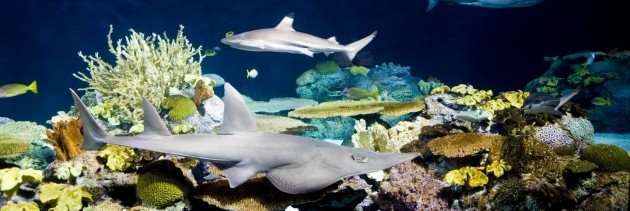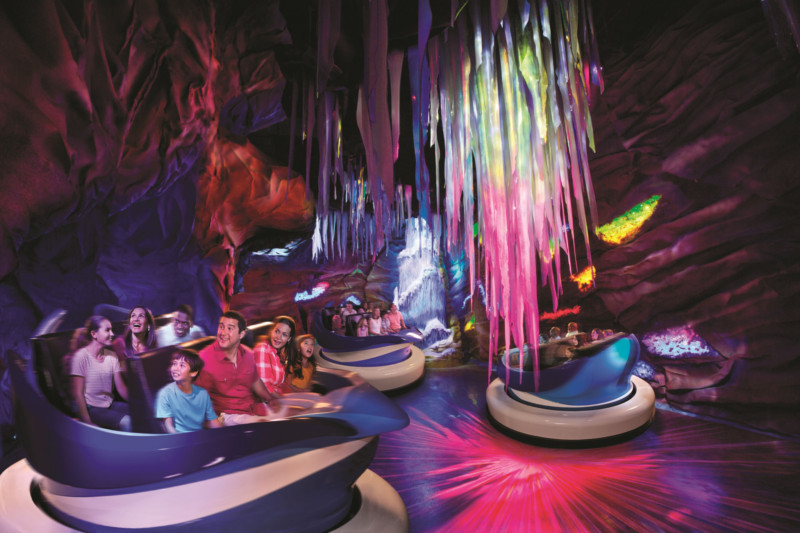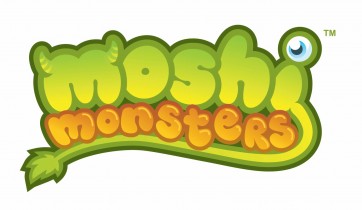 Washington, DC, USA — SEGD, the Society for Environmental Graphic Design, has announced the appointment of six new members to its international Board of Directors, including its first board member from Australia.
Washington, DC, USA — SEGD, the Society for Environmental Graphic Design, has announced the appointment of six new members to its international Board of Directors, including its first board member from Australia.
New board members include:
• Richard Bencivengo, Lexington Design + Fabrication (Pacoima, Calif.)
• Cynthia Hall, Studio SC (Seattle)
• J. Graham Hanson, Graham Hanson Design (New York)
• Alan Jacobson, ex;it (Philadelphia)
• Bryan Meszaros, OpenEye (South Amboy, N.J.)
• Stephen Minning, BrandCulture Communications (Sydney)
The 26-member board represents all facets of the multidisciplinary world of environmental graphic design, from traditional wayfinding to digital experiences, on the professional side as well as the industry side, says Clive Roux, CEO of SEGD.
“We’re fortunate to be able to attract energetic and engaged professionals internationally who are actively engaged in raising the standards of practice for design at the intersection of people and the built environment,” he adds.
Amy Lukas, Partner in Infinite Scale (Salt Lake City) and President of the SEGD Board, notes that Stephen Minning is the board’s first member from Australia. “There is an incredible amount of awardwinning environmental graphic design work coming out of Australia and New Zealand. We have active chapters there, and we’re thrilled to build our representation Down Under. We’re looking forward to Steve’s perspective and contributions.”
The terms of four veteran SEGD board members ended in 2012: Gary Anzalone, Precision Signs (New York); Teresa Cox, APCO Graphics (Atlanta); Sue Gould, Lebowitz | Gould | Design (New York); and Cybelle Jones, Gallagher & Associates (Silver Spring, Md.).
The 2013 Board also includes a returning Board member, Alan Jacobson, who served from 2000 to 2007, including a stint as Board treasurer. “We’re honored that Alan has agreed to serve again as a Board member,” notes Lukas. “He brings a wealth of strategic expertise to the board, as well as continuity through his knowledge of SEGD’s history and past initiatives.”
Lukas also acknowledged the leadership of new CEO Clive Roux. “He brings great new energy to SEGD. As a forward-thinking designer himself, he has a keen sensibility to the desires of our long-time members as well as those of the new generation of designers. SEGD will also benefit from his knowledge of emerging technologies in the design industries.”
A complete listing of SEGD’s 2013 Board of Directors can be found on the SEGD website,
http://www.segd.org/#/about-us/5092/5093.html.
About SEGD
Founded in 1973, SEGD is the leading global organization dedicated to communication design in the built environment. Through educational programs, research, and publications, SEGD’s mission is to provide learning opportunities and resources for professionals involved in creating environmental graphics, promote the importance of the discipline in establishing place, and continue to refine standards of practice for the field.
About the New SEGD Board Members
Richard Bencivengo
Lexington Design + Fabrication
Richard has been President and CEO of Lexington Design + Fabrication for 10 years. Under his leadership, the company has broadened its rich from theme parks and museums to include high-definition television environments, casino gaming architectural elements, lighting and theming, and high-end retail. Lexington’s client list includes many of the world’s most recognizable brands, including The Walt Disney Company, NBC Universal, Coca Cola, Oakley, ESPN, and NBC.
Richard’s experience ranges from producing and directing television and radio programs and movies for both cable and broadcast outlets in the U.S. and abroad to leading corporate teams in marketing and sales. He is a member of the Directors Guild of America and a graduate of Rutgers University. He resides in Santa Monica with his wife, who is a successful artist, and their two sons.
Cynthia Hall
Studio SC
Cynthia is Chair of SEGD’s Seattle/Pacific NW Chapter and the Chapter Chair Liaison to the Board of Directors. A Senior Designer at Studio SC in Seattle, she has more than 18 years experience in environmental graphic design, branding, identity, and print design. She has worked for various design firms, and for several years owned her own graphic design business.
A native of Philadelphia, Cynthia moved to Seattle in 2008 and lent her three-dimensional sensibility to the design team at Girvin. In 2011, she moved to Studio SC. A skilled project manager, Cynthia has led many large-scale EGD projects from conception through completion for clients such as Ameristar Casinos, Chozu Japanese Baths, the City of Salem, Intel, International House, Kaiser Permanente Northwest, Oqyana World
First, Salem Keizer Public Schools, Pearl Acapulco, Triad Development, Seattle Children’s Hospital, the City of Tacoma, University of Washington, and Microsoft.
J. Graham Hanson
Graham Hanson Design
Graham studied at Iowa State University and the Lorenzo de’ Medici Institute in Florence, Italy. Prior to founding Graham Hanson Design in 1997, he was with Vignelli Associates, where he designed the identity and wayfinding system for the Guggenheim Museum Bilbao and projects for Philip Johnson at The Museum of Modern Art and Trump International Hotel in New York.
Graham’s work has been widely recognized in design competitions and publications. His recent projects include large-scale rebranding efforts for the Kuwait National Museum and Saks Fifth Avenue OFF 5TH. He has longstanding relationships with several well known corporate clients, including Google, American Express, Dun & Bradstreet, and Vornado Realty Trust. Among current ongoing projects for cultural organizations is a large-scale environmental design initiative for Carnegie Hall. He has been an Adjunct Associate Professor and thesis advisor in the Graduate Design Communications program at Pratt Institute since 1995.
Alan Jacobson
ex;it
Alan is President of ex;it, a design strategy firm focused on experience design, strategic planning, brand strategy, wayfinding, and interpretive design. He is also Co-Founder and Principal of branding, identity, and publication design firm BAJ Design. He has led recent projects for clients such as George Washington University, the Philadelphia Convention and Visitors Bureau, Kaiser Permanente, USA250, Virtua Health, University of Maryland, SAP, Jefferson University Hospital, Novartis, and the University of Pennsylvania School of Social Policy.
In addition to his design leadership, Alan has modeled a sincere commitment to integrating career, community, and service. Since 2006, Alan has been working with genocide victims in a Rwandan village and, working with the ex;it Foundation and students at Drexel University, he initiated the Rwanda Sunflower Oil Co-operative in Rugerero survivors village. Most recently, he climbed Mount Kilimanjaro to raise funds for the co-operative start up. He is also Chair of the board for the Village of Arts and Humanities in Philadelphia.
Stephen Minning
BrandCulture Communications
Founder and Managing Director of BrandCulture Communications, Stephen is a branding and wayfinding specialist with more than 20 years’ international experience working with blue chip companies and public-sector organizations. He discovered his passion for design while working at BBDO advertising agency in Dubai. He worked as an art director for leading advertising agencies in London and the USA, creating campaigns for iconic global brands such as FedEx, Pepsi, Cadbury’s, and General Motors.
Relocating to Sydney, Stephen worked for several leading creative agencies, where he learned about, and grew to love, the Australian design industry and culture. In 2003 he founded BrandCulture, and has since collaborated on internationally recognized projects with leading architects, property developers, and interior designers, such as Geyer, Brookfield Multiplex, Built, Woodhead, HBO+EMTB, and Woods Bagot. BrandCulture’s work has been recognized by design awards and publications globally, including SEGD’s Global Design Awards.
Bryan Meszaros
OpenEye
With a passion for design and an attraction to technology, Bryan’s interpretation of both has propelled him to the forefront of an emerging industry. In 2000, while working as the Director of New Media Initiatives for MarketSource, Bryan helped lead the development of Campus Central, the first university-based, digital out-of-home network in the U.S.
In 2002, at the age of 23, Bryan formed the digital media consultancy OpenEye. From the start, OpenEye experienced global success and was awarded one of the first-ever DIGI Awards for their work with Regency Duty Free (The Nuance Group) in New Zealand. OpenEye has continued its success, working with clients including FITCH, Intel, Apple, Banco Santander, McDonald’s New Zealand, and Vodafone. In 2008, OpenEye was
instrumental in developing a digital wayfinding application for the Smithsonian Institution’s National Museum of Natural History. The project was awarded a 2008 DIGI Award and a 2009 MUSE Award from the American Association of Museums.
 Orlando, FL, USA — After four months, SeaWorld Orlando announces its collaboration with Scholastic, the global children’s publishing, education, and media company, to launch a new digital hub featuring science and math activities for students in grades K-5 all about penguins and Antarctica. The site also features a live “Penguin Cam,” bringing penguins right into classrooms nationwide.
Orlando, FL, USA — After four months, SeaWorld Orlando announces its collaboration with Scholastic, the global children’s publishing, education, and media company, to launch a new digital hub featuring science and math activities for students in grades K-5 all about penguins and Antarctica. The site also features a live “Penguin Cam,” bringing penguins right into classrooms nationwide.
























